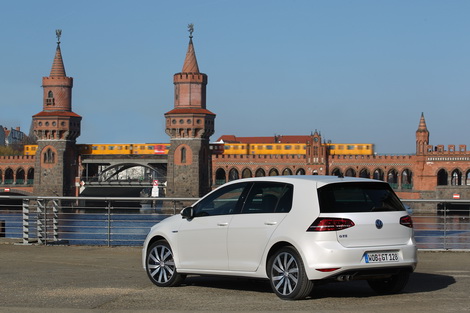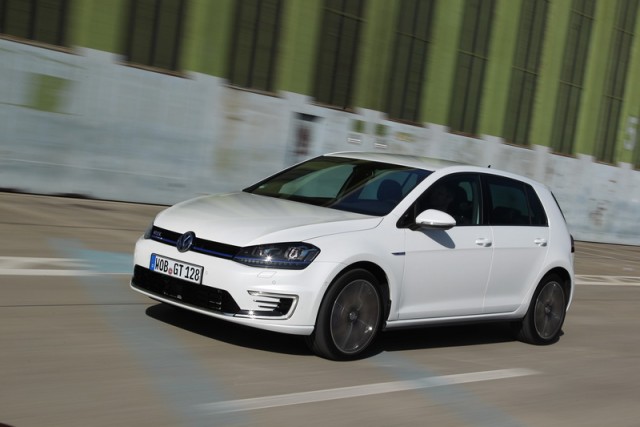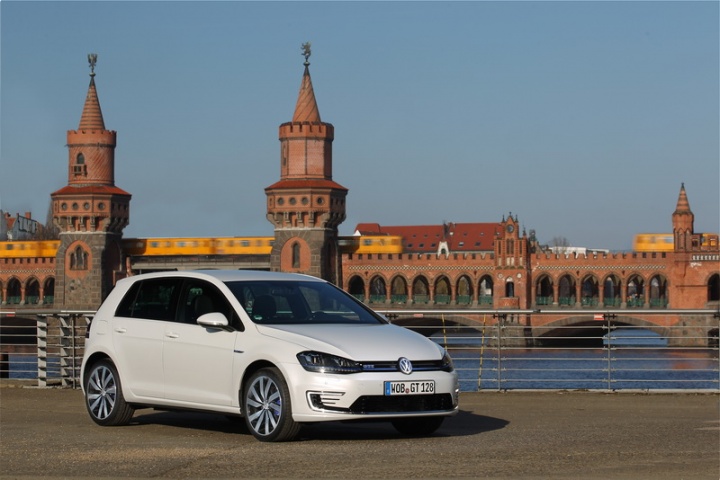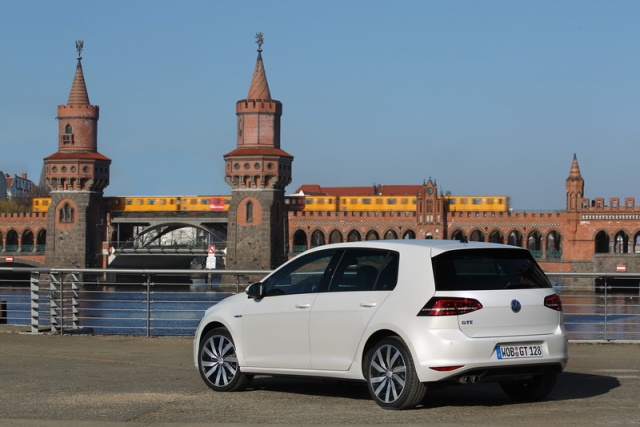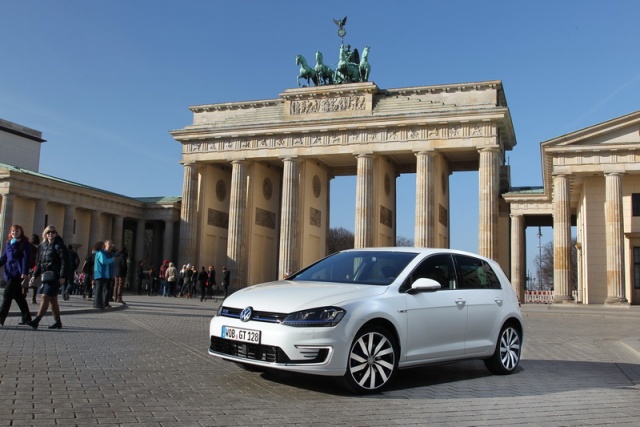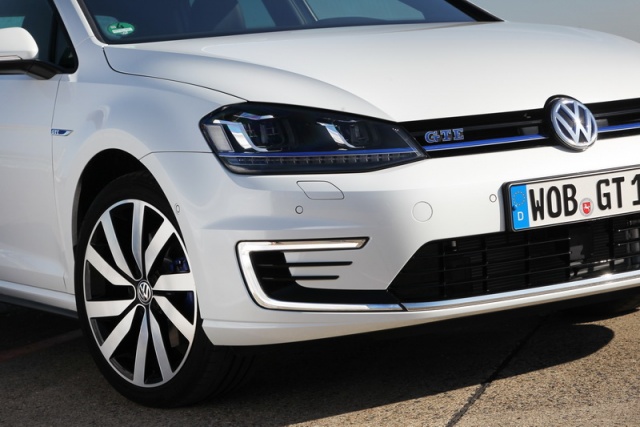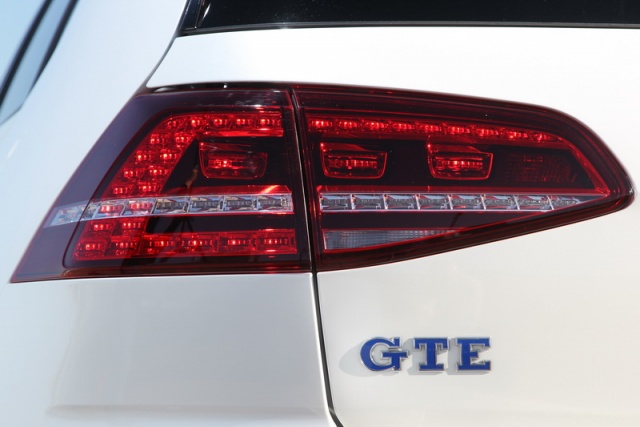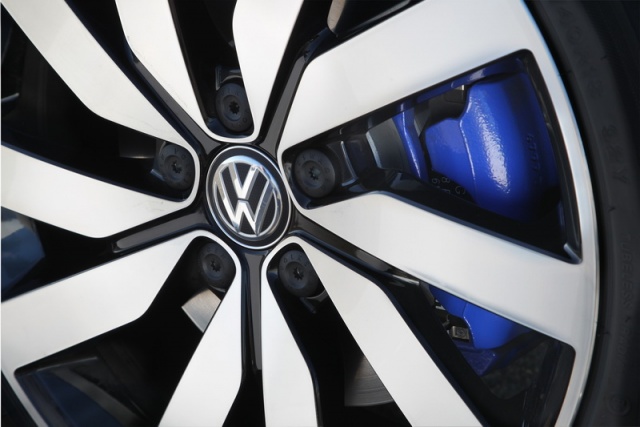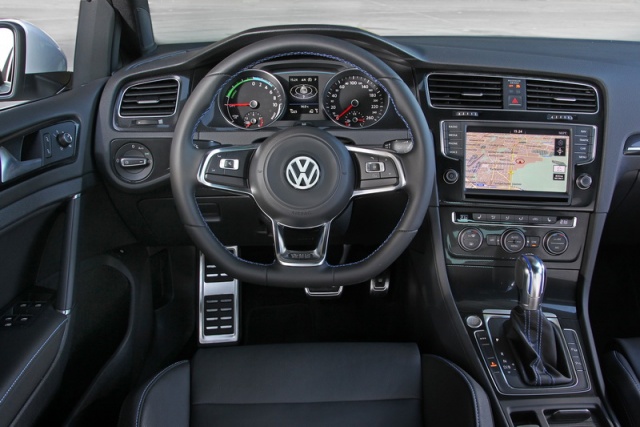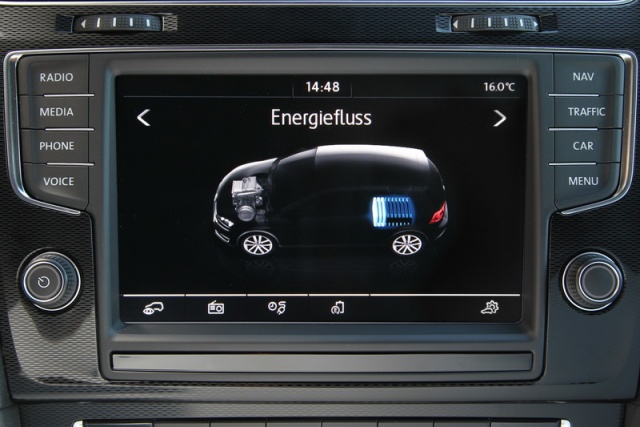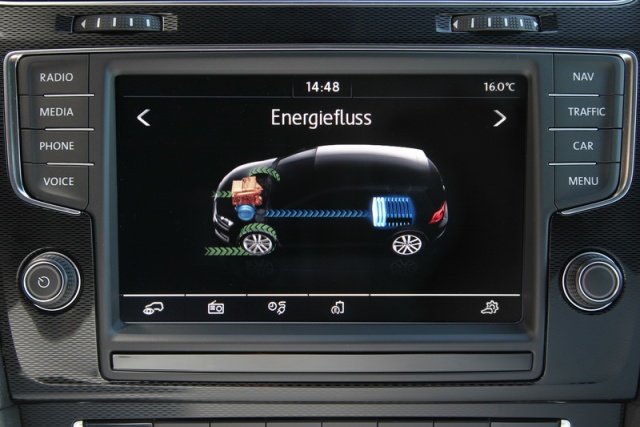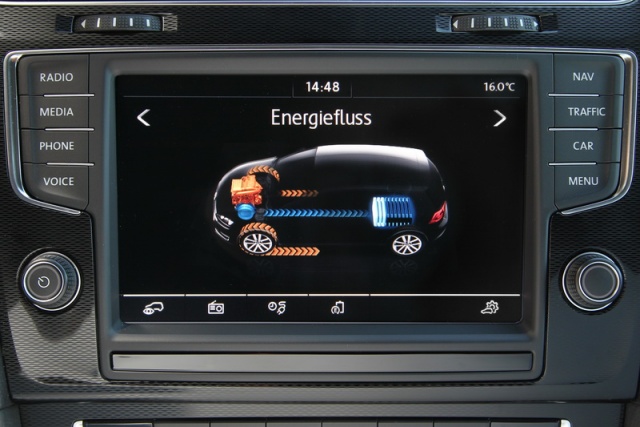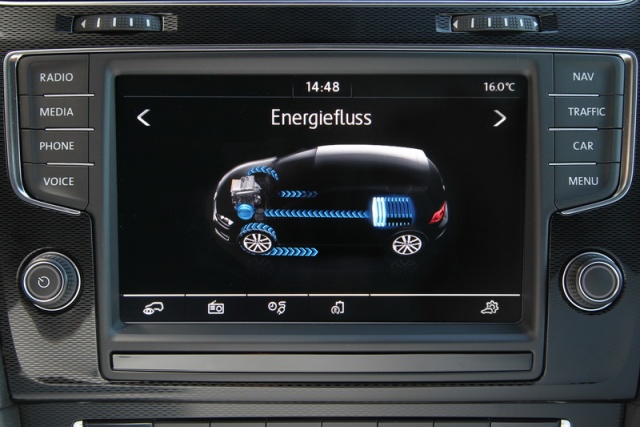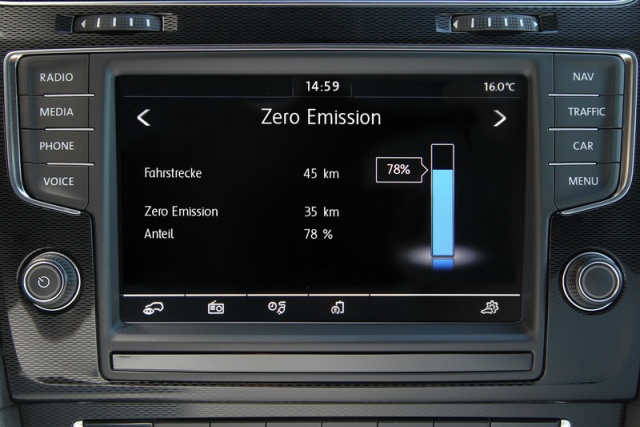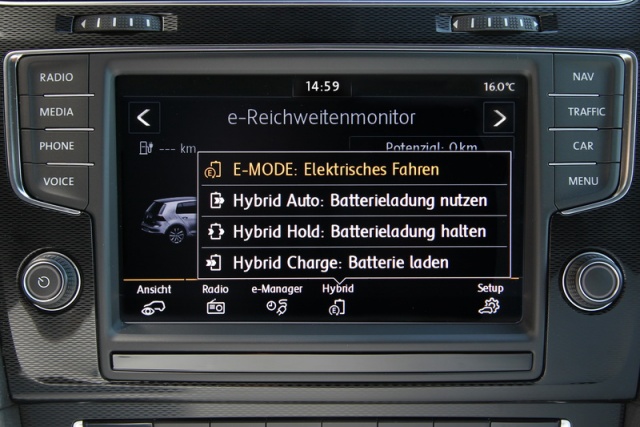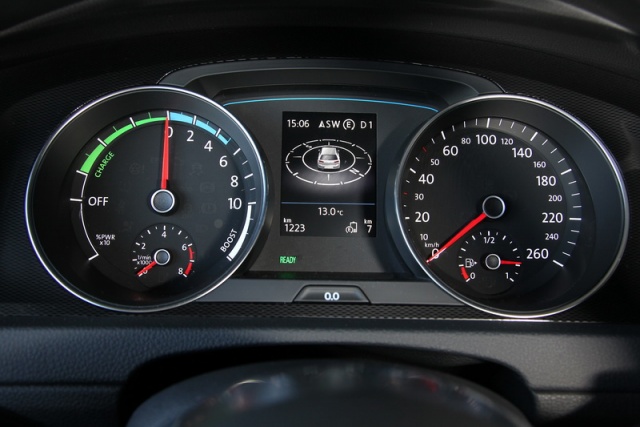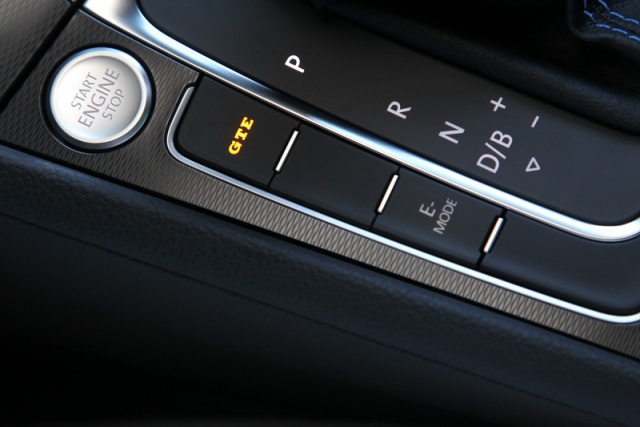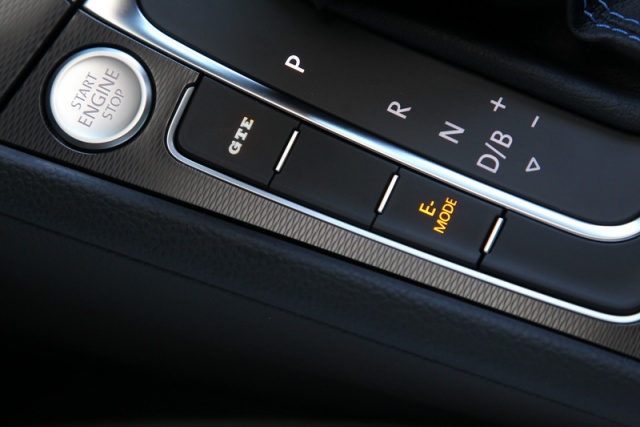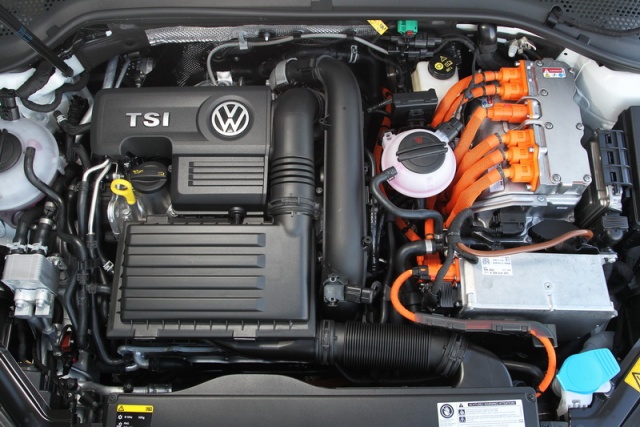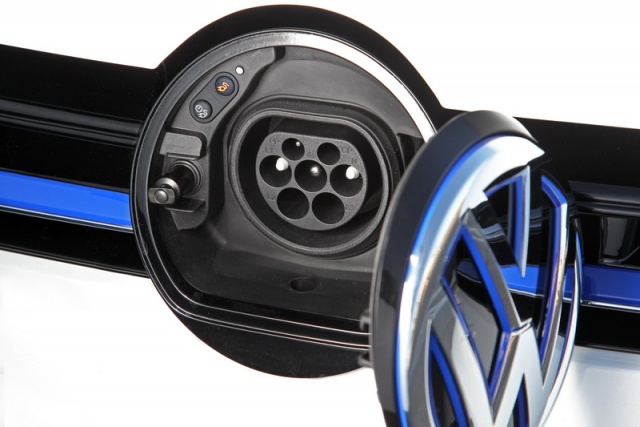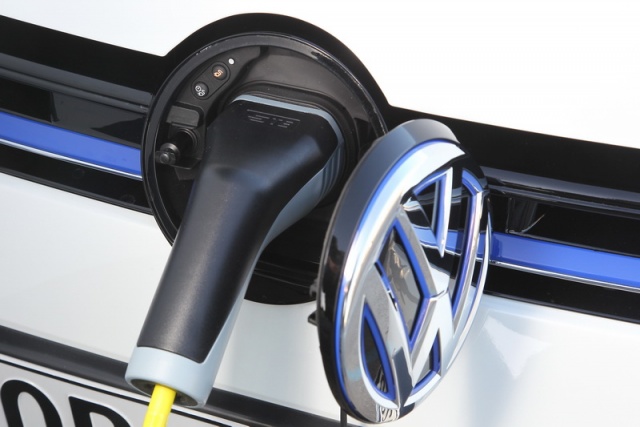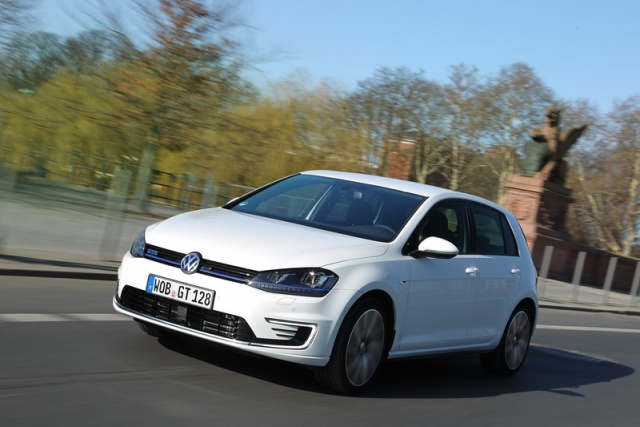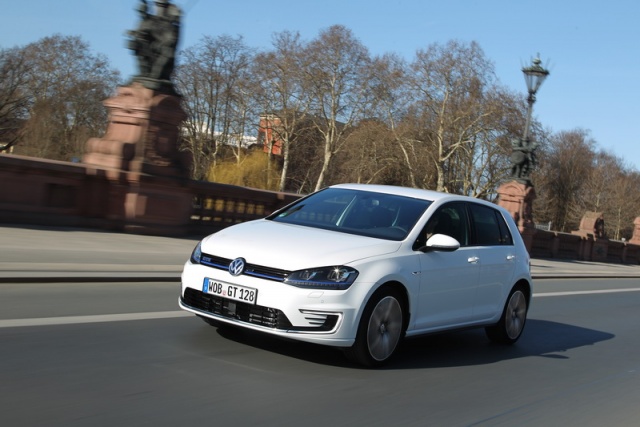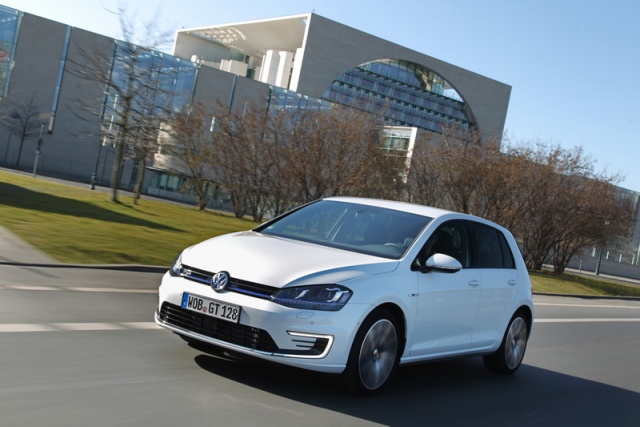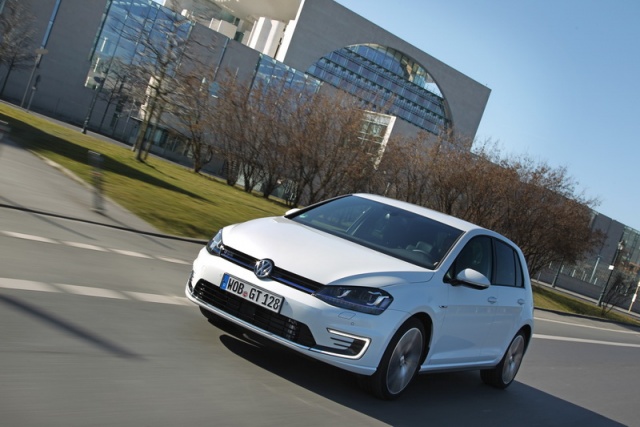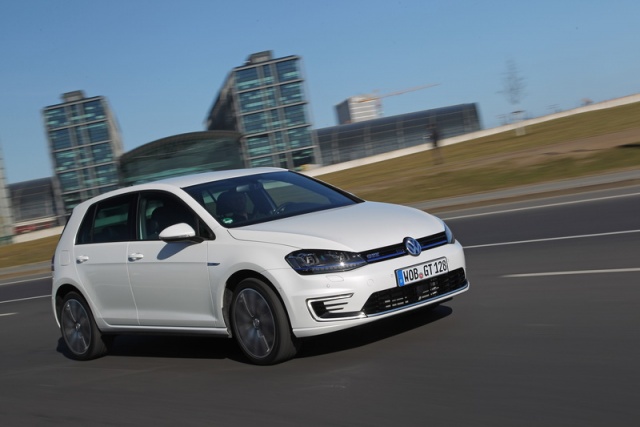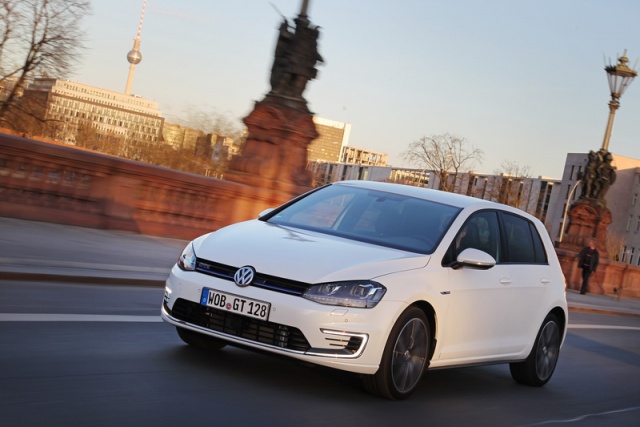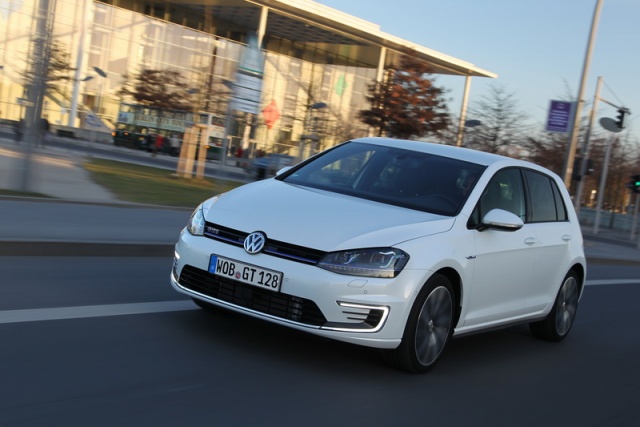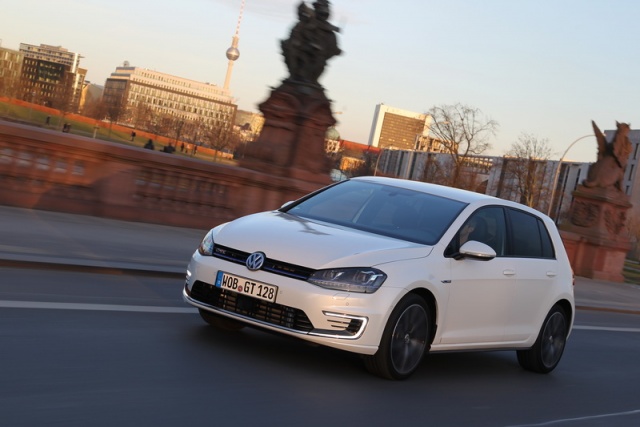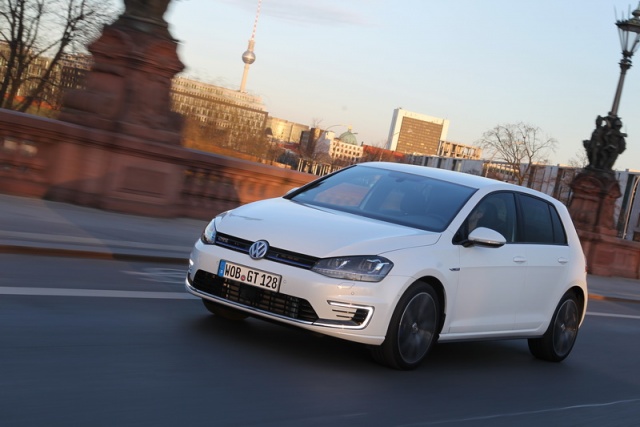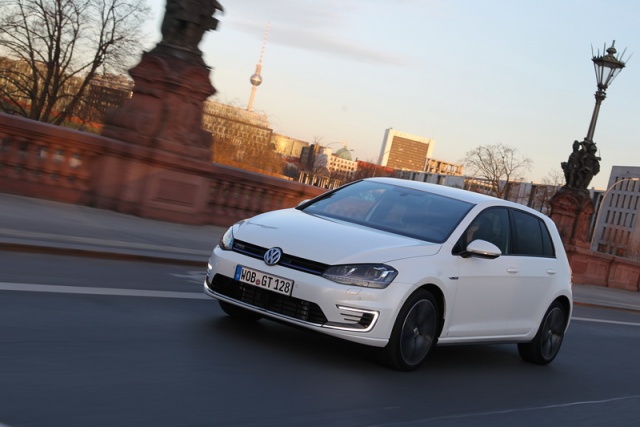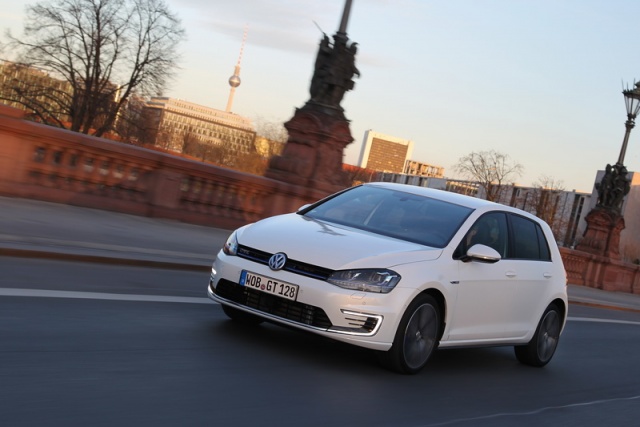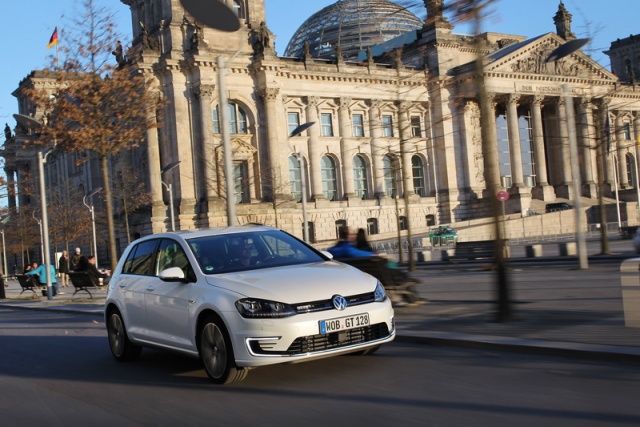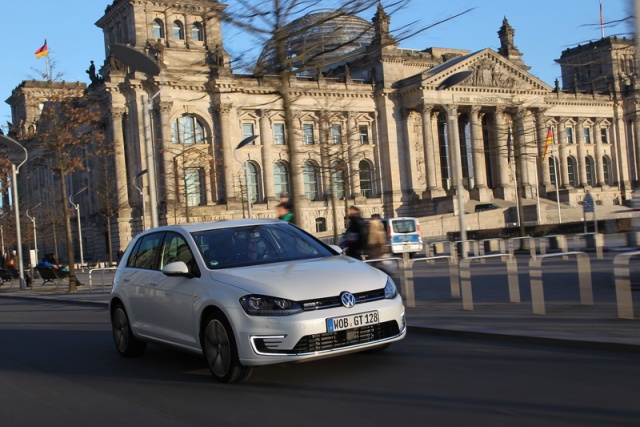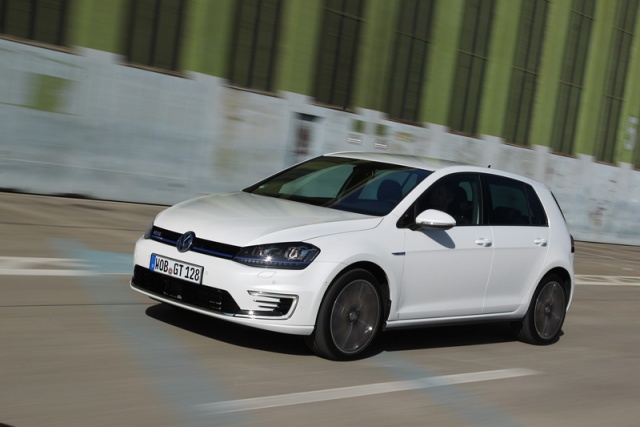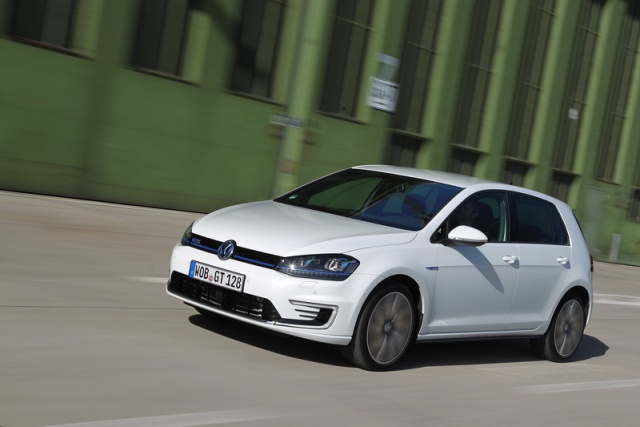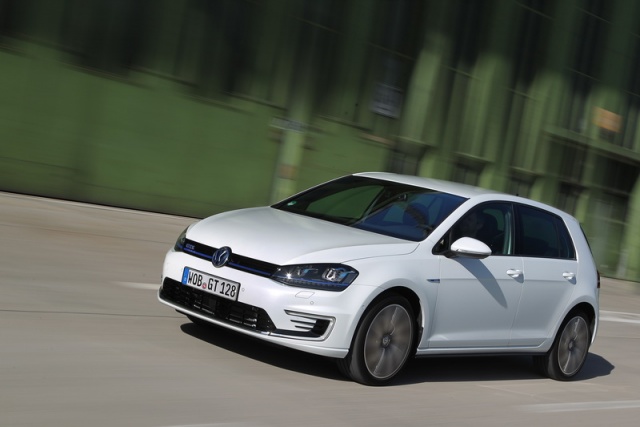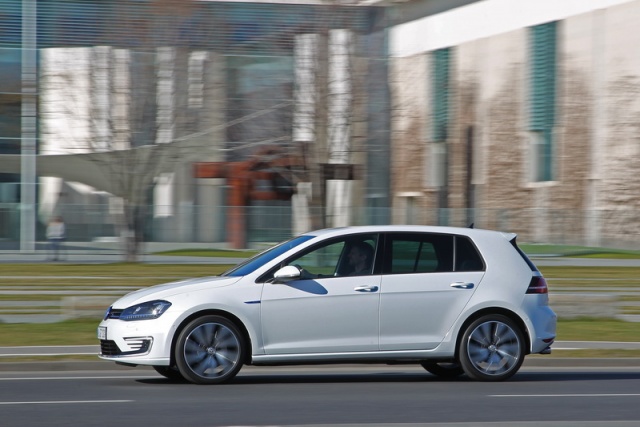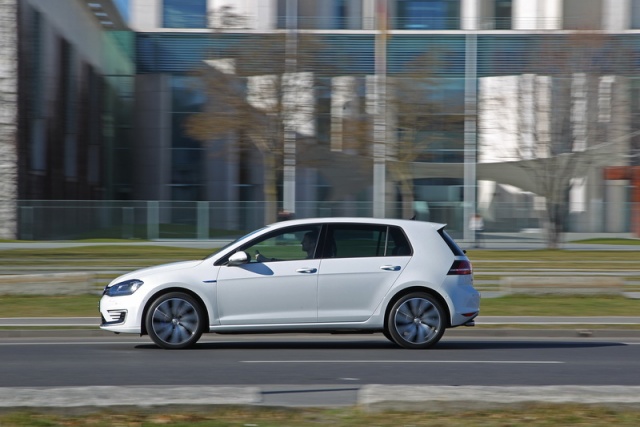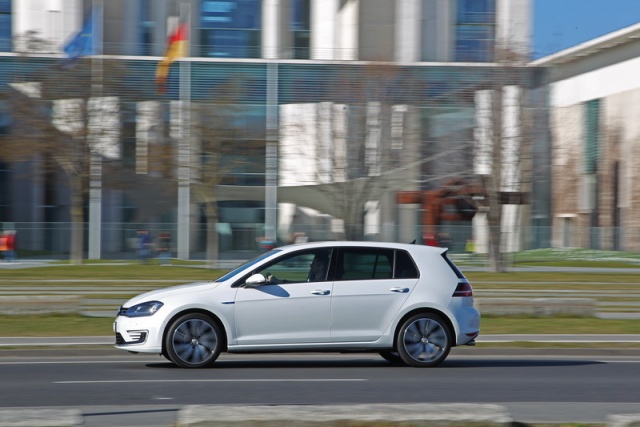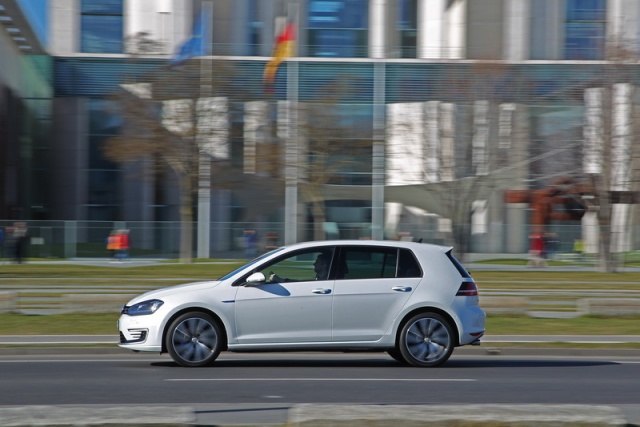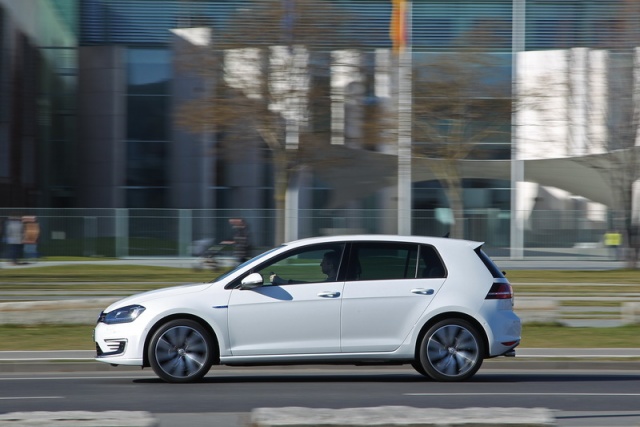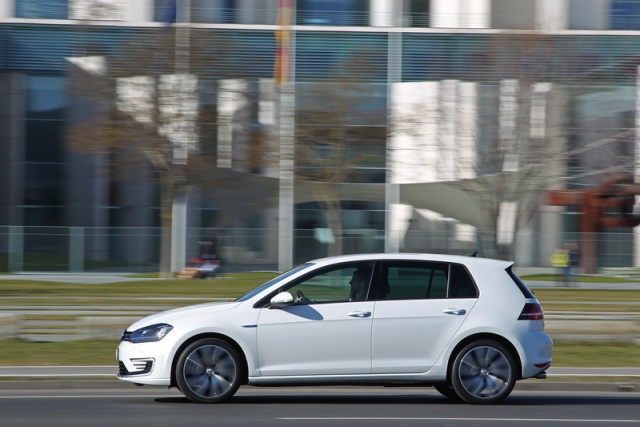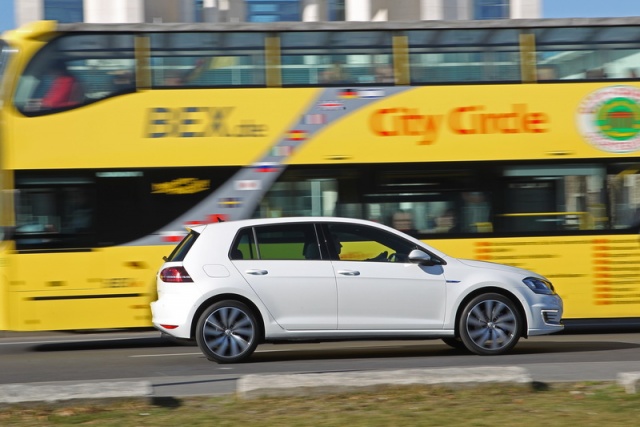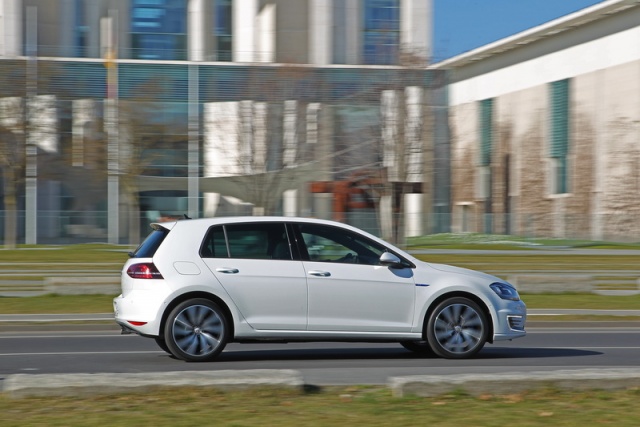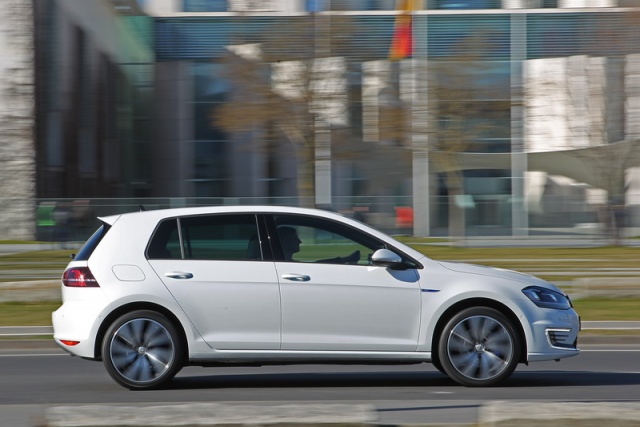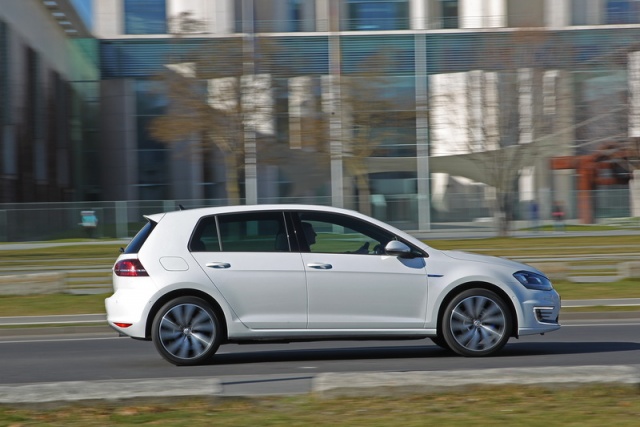Overall rating: 4/5
Had the Golf GTE we drove in Germany been nothing more than a future-gazing concept we would have been impressed such is the talent of its powertrain, but the fact that this car is set for production is even more impressive. Hybrids are no longer 'new', and many offer up similar combined power figures as the GTE, but none have done so in such an extrovertly sporty manner. By labelling the plug-in hybrid Golf a GTE Volkswagen has made what could have been a dull car sexy and appealing. We will just have to wait until we see the price to determine exactly how appealing.
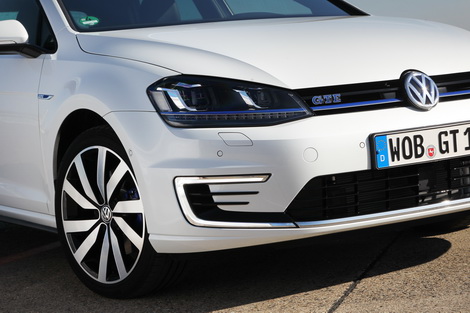
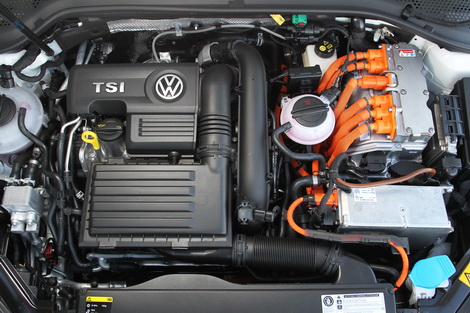
In the metal 4/5
Somewhat fittingly the Golf GTE draws visual inspiration from both the car it uses technology from (the new e-Golf) and the one it aspires to be (the GTI). Like the e-Golf it wears a closed off front grille with a blue stripe, which mimics that of the GTI in design, if not colour. It also has the C-shaped daytime running lights, which will be unique to the EV and hybrid versions of the Golf, but these are joined by the horizontal strakes from the GTI/GTD wardrobe department.
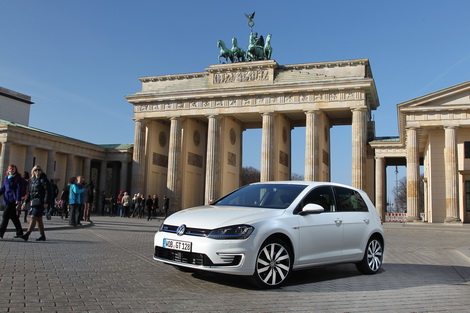
Whereas the e-Golf we tested drove on aerodynamically designed 16-inch alloy wheels, which look... well a bit unappealing, the GTE wears much more sporty looking items not too dissimilar to those found on the flagship models. The attendant Volkswagen engineer was keen to point out however that the cars we drove were pre-production prototypes so the styling has not been completely set in stone.
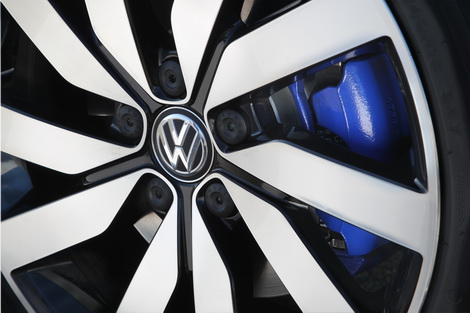
Not that you would guess this is anything other than a production ready car when you step inside. All the usual GTI hallmarks are there; from the flat-bottomed steering wheel (with blue stitching and GTE badge) to the tartan upholstery for the sport seats (again in blue), this looks like a finished car and shows none of the signs of pre-production vehicles we have driven previously.
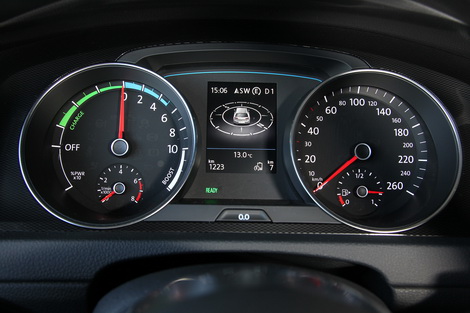
Driving it 4/5
New range of hypercars aside plug-in hybrids have up until now been hugely worthy, but a tad dull. The GTE should change that. Under its bonnet is a 150hp version of Volkswagen's tried and tested turbocharged 1.4-litre TSI petrol engine, which is joined by a 100hp electric motor. Combined, these two powerplants deliver up to 200hp and 350Nm of torque. To put that into perspective, the standard Golf GTI produces 220hp and 350Nm, but cannot come close to the GTE's quoted fuel consumption figure of 1.5 litres/100km (188mpg) and emissions rating of just 35g/km. Could the GTE be the best of both worlds?
Well it is certainly not slow anyway - ok its 0-100km/h time of 7.2 seconds means it is slower than not only the GTI, but also the GTD, but it is the way that the GTE gets up to speed that impresses. Start the car up and it will default to EV mode, in which it can travel 50 kilometres and at speeds up to 80km/h. The petrol engine only joins the party when you ask for more power than the 8.8kWh battery can provide to the motor. You can also select hybrid mode by depressing the 'e-mode' switch on the centre console.
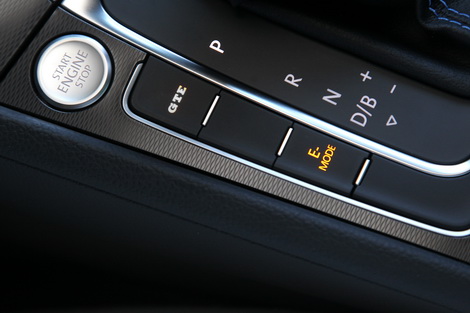
In this guise the GTE drives much like any other hybrid: it's docile and quiet, but not particularly quick, even with the electric motor's access to torque from 0rpm. For that you have to select GTE mode, which (according to the nice man from Volkswagen) infuses the GTE with GTI DNA. It wakes up the active exhaust system for a start, which certainly makes it sound like a GTI. It also sharpens up the throttle response and weights up the steering wheel and it allows the two powerplants to enjoy a quite harmonious relationship. In GTE mode the engine and electric motor work together to deliver the most power with the electric motor also filling in the gaps in the engine's arsenal. There is no lag while the turbo girds its loins and while the gearchanges from the six-speed DSG transmission are quick there is no discernable let up in acceleration when you ask for another ratio, as the electrics plug the gap.
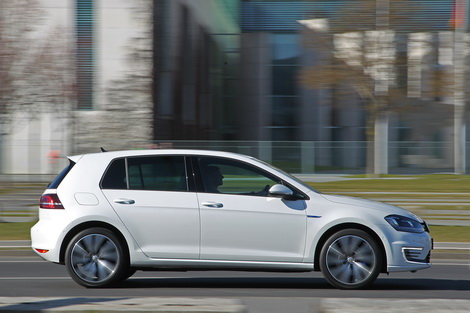
As our drive of the car was limited to a short time on the apron of Templehof Airport we cannot truly comment on the handling of the car, though it should be noted that the electric motor and all its ancillaries do add 137kg to the weight of the GTI. Much of this is placed low down however and that nice man assured us it does not have a detrimental effect on the handling. We will have to wait to drive the production model to confirm this.
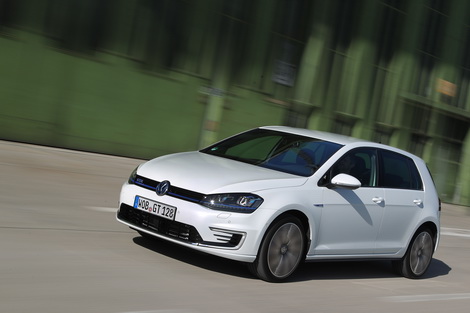
What you get for your money 3/5
This is the six-million dollar question. As a day-to-day machine the GTE possibly makes more sense than the e-Golf, which is likely to cost 'less than €30,000'. However, the GTE will of course carry a GT premium, but it has to come in less than the GTD if it is to succeed. The government plug-in hybrid grant will of course trim some fat from the top end, but we still reckon it will have to be offered for €37,000 or thereabouts to make any sense at all.
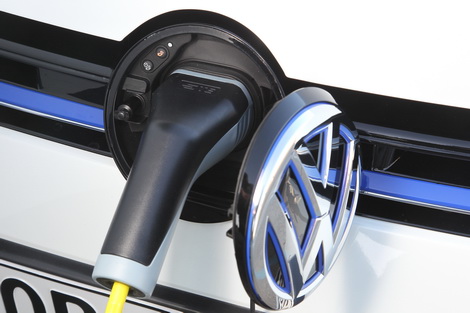
Worth Noting
Unlike the e-Golf, which has its charging socket behind the fuel-cap, the GTE has to hide it somewhere else (that space is still used for pumping in petrol). So the GTE socket is hidden behind the grille badge. Once plugged in, a full charge of the 8.8kWh battery (about a third the size of the one in the e-Golf), should take three and a half hours. The car will also top up the battery while you are driving via regenerative braking, which you can keep an eye on via the unique dash instrumentation and flow-meter on the 6.8-inch touchscreen.
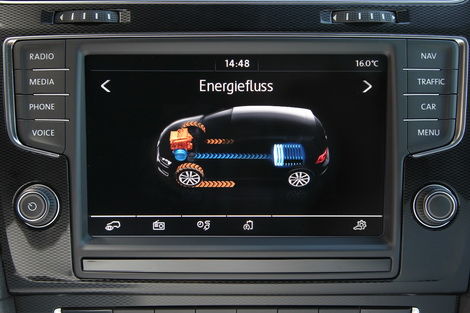
Summary
The Volkswagen Golf GTE seems like the ideal combination: amazing frugality for the Monday to Friday slog with the performance of a Golf GTI (almost) when the mood takes you. It is likely to appeal to many but a lot will hinge on the price, which as yet, is unconfirmed.
